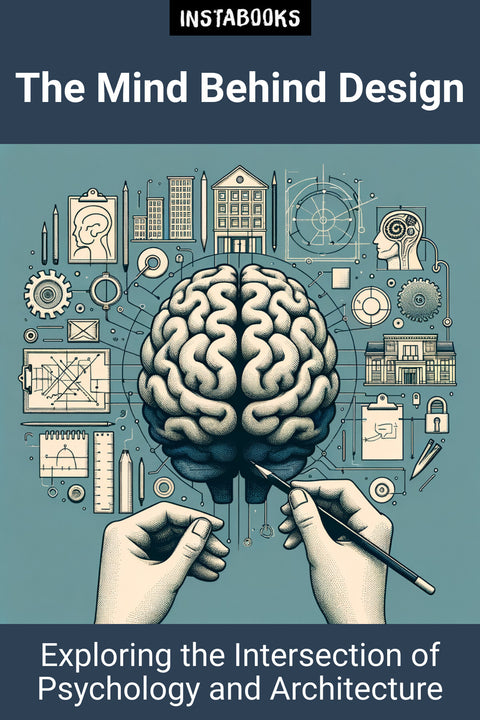
The Mind Behind Design
Exploring the Intersection of Psychology and Architecture
Included:
✓ 200+ Page AI-Generated Book
✓ ePub eBook File — read on Kindle & Apple Books
✓ PDF Print File (Easy Printing)
✓ Word DOCX File (Easy Editing)
✓ Hi-Res Print-Ready Book Cover (No Logo Watermark)
✓ Full Commercial Use Rights — keep 100% of royalties
✓ Publish under your own Author Name
✓ Sell on Amazon KDP, IngramSpark, Lulu, Blurb & Gumroad to millions of readers worldwide
Captivating Exploration of Psychology in Architecture
The The Mind Behind Design delves into the fascinating intersection of psychology and architecture. This comprehensive guide explores how our built environments shape our thoughts, emotions, and behaviors, providing invaluable insights for students, professionals, and enthusiasts in both fields. Each chapter meticulously examines different aspects of this interdisciplinary study, offering practical applications and innovative perspectives rooted in robust research.
Comprehensive and Systematic Coverage
Divided into twelve detailed chapters, the book takes readers on a thought-provoking journey. Starting with fundamental concepts, it progressively delves into more complex theories and real-world applications. Each chapter is structured to cater to varying knowledge levels, with clear explanations for beginners and in-depth analyses for experts. Whether you are a psychology student looking to understand the impact of physical spaces or an architect aiming to create more human-centric designs, this book is an essential resource.
Key Insights and Benefits
Apart from its academic rigor, The Mind Behind Design stands out for its practical relevance. It bridges the gap between theory and practice, providing actionable insights that readers can apply in their studies or professional work. The book emphasizes critical themes such as:
- The psychological impact of architectural elements like light, color, and space
- How cognitive psychology influences design thinking and user experience
- Case studies showcasing successful applications of psychological principles in architecture
Bridging Two Worlds for a Better Future
By merging psychology and architecture, this book highlights the potential for creating environments that enhance well-being and functionality. It's not just about aesthetics; it's about designing spaces that resonate with our innate psychological needs and improve quality of life. The unique perspectives offered within these pages are poised to inspire new research, inform academic discourse, and influence real-world architectural practices positively.
Your Essential Guide to an Emerging Field
Whether you're at the beginning of your journey or seeking advanced knowledge, The Mind Behind Design is tailored to your needs. Its exhaustive coverage ensures that readers from all backgrounds will find something valuable. Don't miss out on this opportunity to explore the profound connection between psychology and architecture. Embark on a transformative journey that will change how you think about spaces and the human mind.
Table of Contents
1. Introduction to Psychology and Architecture- Historical Overview
- Defining the Relationship
- Importance of Interdisciplinary Study
2. Foundations of Environmental Psychology
- Key Concepts
- Impact on Behavior
- Case Studies in Architecture
3. Cognitive Psychology in Design Thinking
- Cognitive Processes
- Design Strategy
- User-Centered Design
4. Emotional Responses to Architectural Spaces
- Affective Architecture
- Emotional Triggers
- Designing for Emotion
5. Perception and Sensory Influence
- Sensory Processing
- Visual Perception
- Tactile and Auditory Elements
6. The Role of Light and Color
- Psychological Effects of Light
- Color Theory
- Practical Applications
7. Space and Human Behavior
- Spatial Organization
- Crowding and Privacy
- Behavioral Impacts
8. Biophilic Design Principles
- Connection to Nature
- Health Benefits
- Design Implementation
9. Cultural and Social Considerations
- Cultural Psychology
- Social Dynamics
- Inclusive Design
10. Case Studies and Applications
- Successful Projects
- Lessons Learned
- Future Directions
11. Ethical and Sustainable Design
- Ethical Considerations
- Sustainable Practices
- Designing for Future Generations
12. Future Trends in Psychology and Architecture
- Emerging Research
- Innovative Technologies
- Predictions and Challenges
